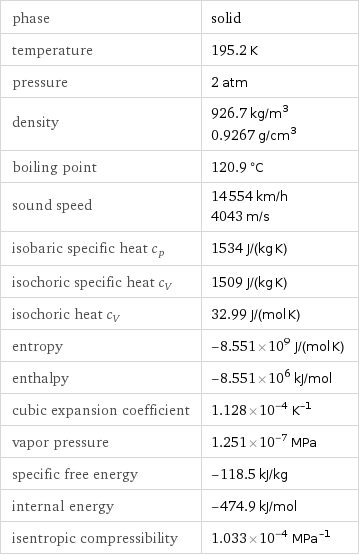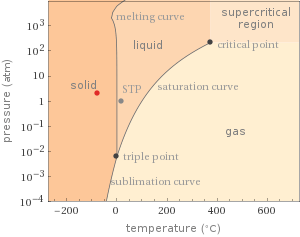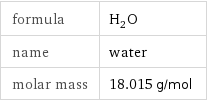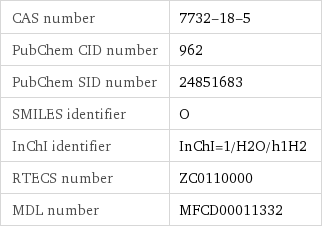Input interpretation

water | phase | solid pressure | 2 atm (atmospheres) temperature | -78 °C (degrees Celsius)
Thermodynamic properties of matter

phase | solid temperature | 195.2 K pressure | 2 atm density | 926.7 kg/m^3 0.9267 g/cm^3 boiling point | 120.9 °C sound speed | 14554 km/h 4043 m/s isobaric specific heat c_p | 1534 J/(kg K) isochoric specific heat c_V | 1509 J/(kg K) isochoric heat c_V | 32.99 J/(mol K) entropy | -8.551×10^9 J/(mol K) enthalpy | -8.551×10^6 kJ/mol cubic expansion coefficient | 1.128×10^-4 K^(-1) vapor pressure | 1.251×10^-7 MPa specific free energy | -118.5 kJ/kg internal energy | -474.9 kJ/mol isentropic compressibility | 1.033×10^-4 MPa^(-1)
Phase diagram

Phase diagram
Units

Lewis structure

Draw the Lewis structure of water. Start by drawing the overall structure of the molecule: Count the total valence electrons of the hydrogen (n_H, val = 1) and oxygen (n_O, val = 6) atoms: 2 n_H, val + n_O, val = 8 Calculate the number of electrons needed to completely fill the valence shells for hydrogen (n_H, full = 2) and oxygen (n_O, full = 8): 2 n_H, full + n_O, full = 12 Subtracting these two numbers shows that 12 - 8 = 4 bonding electrons are needed. Each bond has two electrons, so the above diagram has all the necessary bonds. There are 2 bonds and hence 4 bonding electrons in the diagram. Lastly, fill in the remaining unbonded electrons on each atom. In total, there remain 8 - 4 = 4 electrons left to draw: Answer: | |
3D structure

3D structure
Basic properties

formula | H_2O name | water molar mass | 18.015 g/mol
Units

Chemical identifiers

CAS number | 7732-18-5 PubChem CID number | 962 PubChem SID number | 24851683 SMILES identifier | O InChI identifier | InChI=1/H2O/h1H2 RTECS number | ZC0110000 MDL number | MFCD00011332